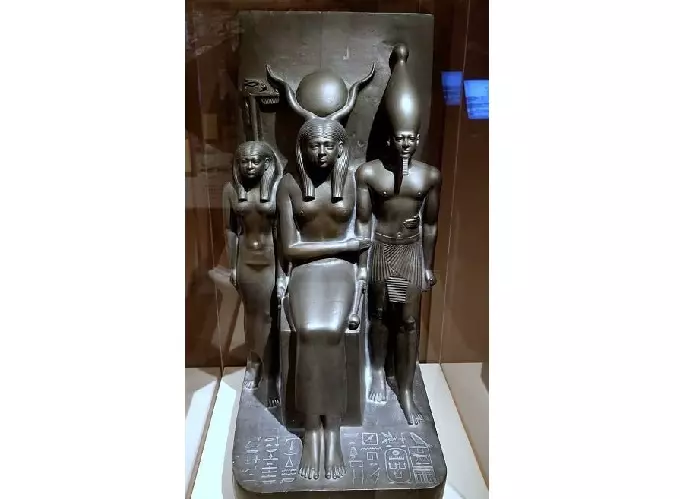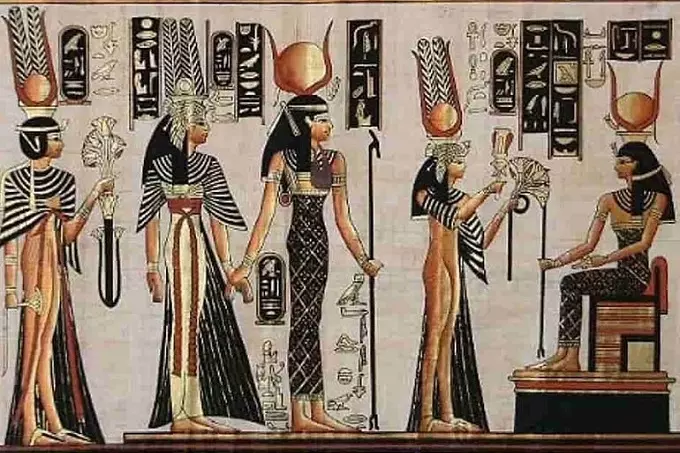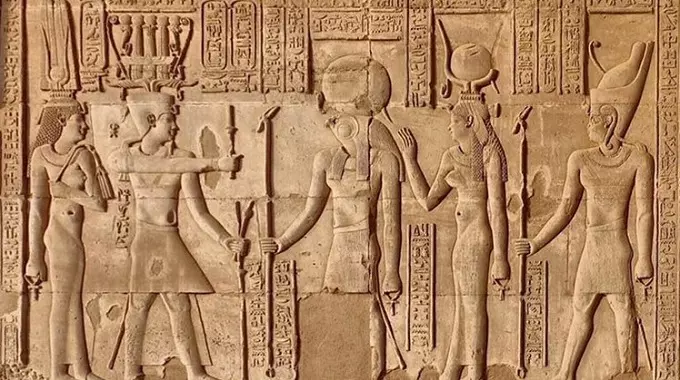Hathor: Egyptian goddess that nearly destroyed the human race

What caused ancient Egypt and Sumeria to flourish in the distant past is not fully understood. Legends of creatures who had divine abilities and sprung from the stars are often connected with the civilizations that developed in these two nations.
However, one of these beings came dangerously close to wiping off mankind. In Nubia, the Semitic Near East, Ethiopia, and Libya were some of the places where worship of the goddess Hathor took place. Hathor was also known as the Lady of the Stars and the Lady of Heaven and Life.
In today’s world, Hathor is seldom given the attention she deserves. Although most people are familiar with Isis, the mother of Horus, Hathor was believed to be the first goddess, and all other goddesses were regarded to be her offspring. She was revered by both the nobility and the ordinary people of ancient Egypt and was considered to be one of the most significant deities of that civilization. From the very inception of the ancient Egyptian religion (about 4000 B.C.) to the very end of it, the devotion of this goddess persisted for many thousand years.

It is believed that the goddess with the cow’s head that is represented on Narmer’s palette goes back to the pre-Dynastic period, and her name was Hathor or Bath (the cow-goddess in Egyptian mythology). The ancient Egyptians believed that Hathor and Nuit, two other goddesses, shared the role of presiding over the heavens. They were linked to the Milky Way, which people believed to represent the liquid emanating from the udders of the celestial cow.
Venus, the Roman goddess of the morning star, was connected to Hathor. Hathor was worshipped by the Romans. The ancient Greeks worshipped her as Aphrodite, the goddess of love and beauty. In the majority of depictions, she seems to be a cow, a lady with horns, or a woman with the ears of a cow. She has a strong connection to the primordial divine cow known as Mehet-Veret, who is also known as the goddess of the sky. Her name means “the Great Flood,” and it was thought that she was responsible for the flooding of the Nile River and the fertilization of the world.
Geraldine Harris, an academic, has asserted that “Hathor was a goddess with golden breasts who assisted in the birthing process, the rebirthing of the deceased, and the revitalization of the universe. This multifaceted goddess has the potential to fulfill roles as the creator god’s mother, partner, and daughter. As a result of the contrast between the positive and negative elements of her nature, many lesser goddesses came to be known as “names” of Hathor. The majority of the time, she was shown as a lovely lady holding a red sun disk in the middle of a pair of cow horns”.
Despite the fact that over the course of time, she grew to be considered the epitome of kindness and love, she was initially a genuine bloodthirsty goddess who was let loose on mankind as a form of divine retribution for the crimes of humanity.
The fallacy of the myth of the Holy Cow
The tale of the celestial cow, which informs of the coming annihilation of humanity, was found for the first time in the most outermost of Tutankhamun’s four golden shrines, albeit in an incomplete form. This myth talks of the imminent destruction of mankind.
Nevertheless, three finished copies of the book have been discovered in the tombs of Ramesses I, Ramesses II, and Seti I, respectively. The text is a royal funeral composition from the New Kingdom, although it is written in Middle Egyptian, which is the original form of classical Egyptian, and the concepts that are contained in it may trace back to the Pyramid Texts from the Old Kingdom.

The tale starts in the fabled past, at the beginning of Egyptian history, at the time when the land was controlled by the deity Ra, the sun. The sun god lived a very long time, and throughout that time, his human followers plotted against him and attempted to overthrow his authority.
Ra clandestinely convened his council, which consisted of the gods Shu, Tefnut, Geb, and Noon, as well as the “mothers and fathers” of the universe who had been with him before the formation of the world. In addition, he invoked his “Eye,” a flaming display of his almighty power, and separated with his council to consider what should be done about the disobedient minds of mankind.
The assembly of gods proposed to Horus that he “let go of his Eye,” so he transformed his daughter into the goddess Hathor and sent her to exact vengeance on the disobedient humans below. She had the ability to strike down evildoers with her might, so keeping them from rising up against the authority of the sun god.
According to the Encyclopedia of Ancient History, it is at this period that the mother goddess undergoes a full transformation, which is related to what can only be described as the most significant event in the annals of global history.
“Ra has second thoughts about his choice and comes up with a strategy to satisfy Sekhmet’s need for blood. He gives the order for a particularly potent batch of beer to be brewed by Tenenet, the Egyptian goddess of beer, and then gives the order for the beverage to be colored red and sent to Dendera. At this point, Sekhmet’s need for blood has driven her to insanity; hence, she seizes the opportunity to start drinking the blood-red beer as soon as she discovers it.
She becomes intoxicated, then falls asleep, and when she wakes up, she’s transformed into the good goddess Hathor. The human race was rescued from extinction, and its tormentor in the past has become their greatest benefactor in the present. After her transformation, Hathor bestowed only beautiful and beneficial gifts upon the children of the earth. She also acquired such a high status that all subsequent Egyptian goddesses could be considered to be forms of Hathor.
She was the first mother goddess and the goddess who ruled over the sky, the sun, the moon, agriculture, fertility, the east, the west, moisture, and reproduction. Additionally, she was connected with merriment, music, love, parenting, dancing, drinking, and, most importantly, thankfulness.”

At the conclusion of the narrative, Ra ascends to heaven, never to return to the realm of the living again. Heaven came into being in the shape of the Heavenly Cow, which was a manifestation of the goddess Nut. The other gods joined the creator deity in order to separate themselves from the mundane earth. In later generations, the Pharaoh descended from the gods and took the form of a mortal man, assuming the role of an intermediary between the realm of the living and that of the gods.
The myth of Hathor was very important to the religious practices of ancient Egypt. After coming dangerously close to wiping off humanity, the goddess who personifies the Milky Way itself eventually became revered as the protectress of happiness, wealth, and festivities.




